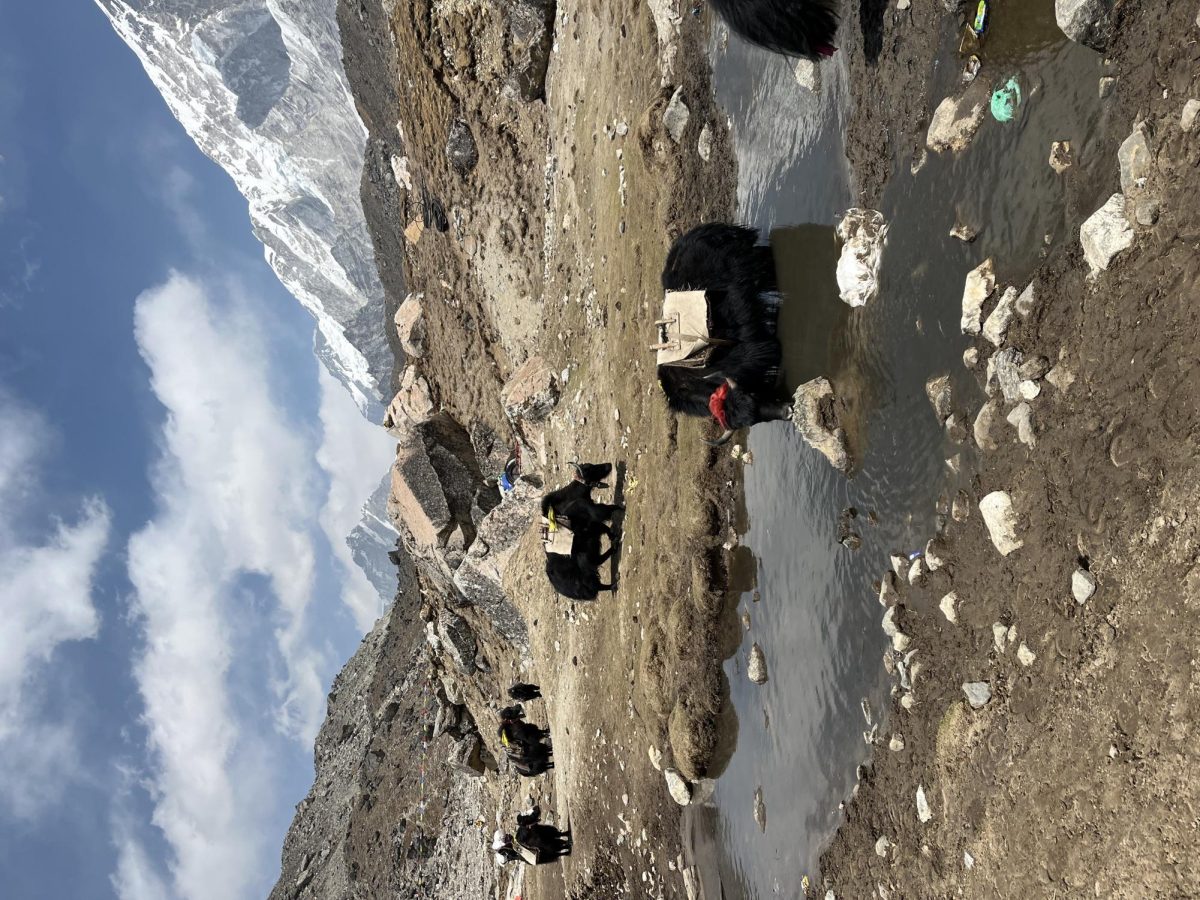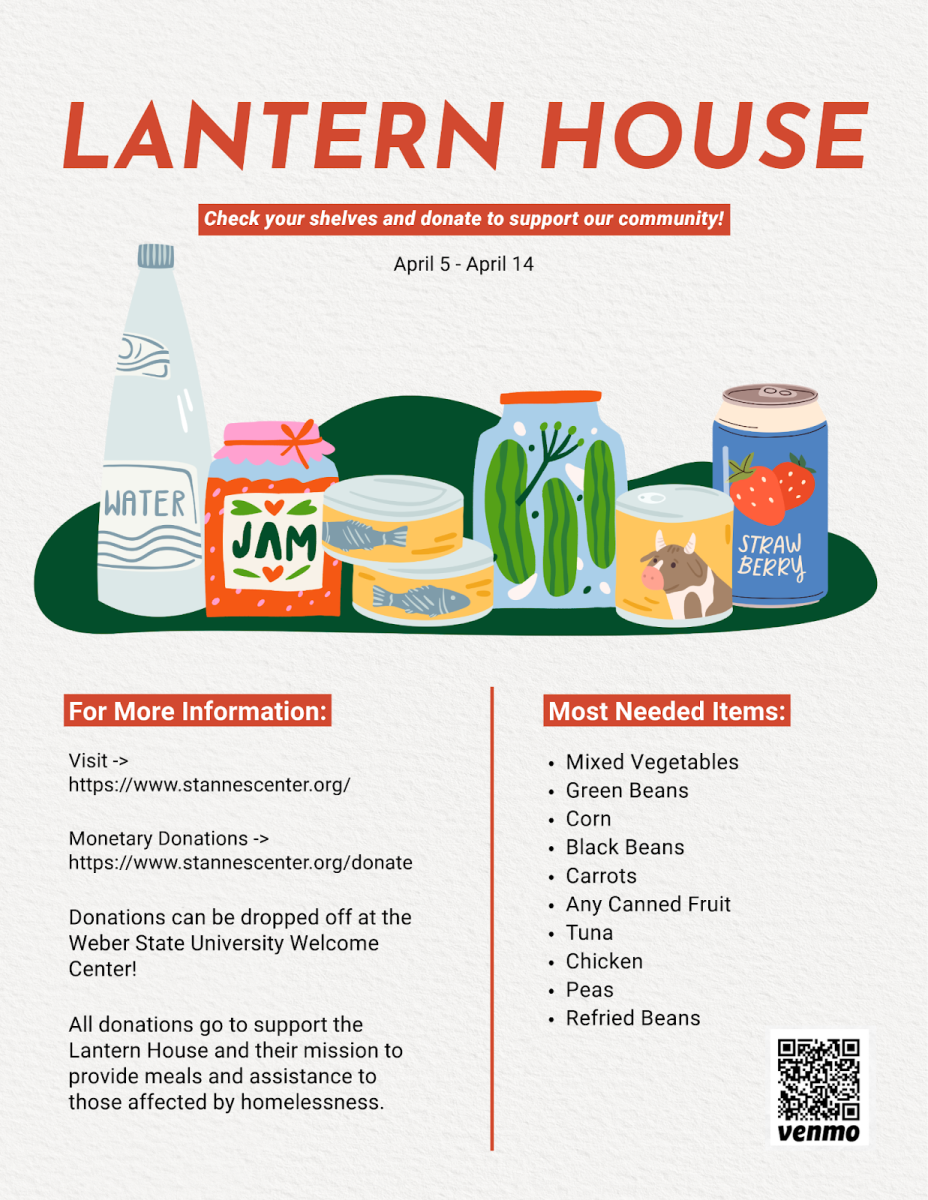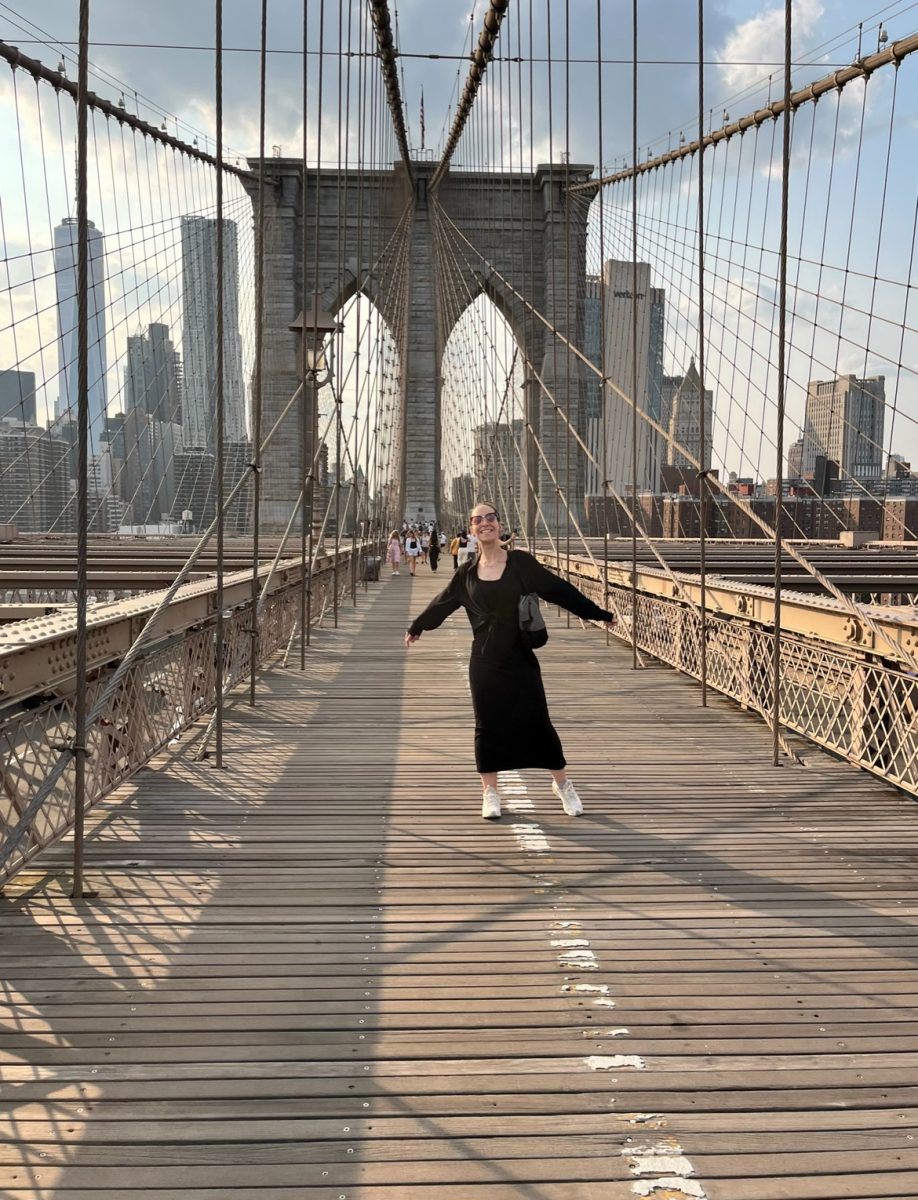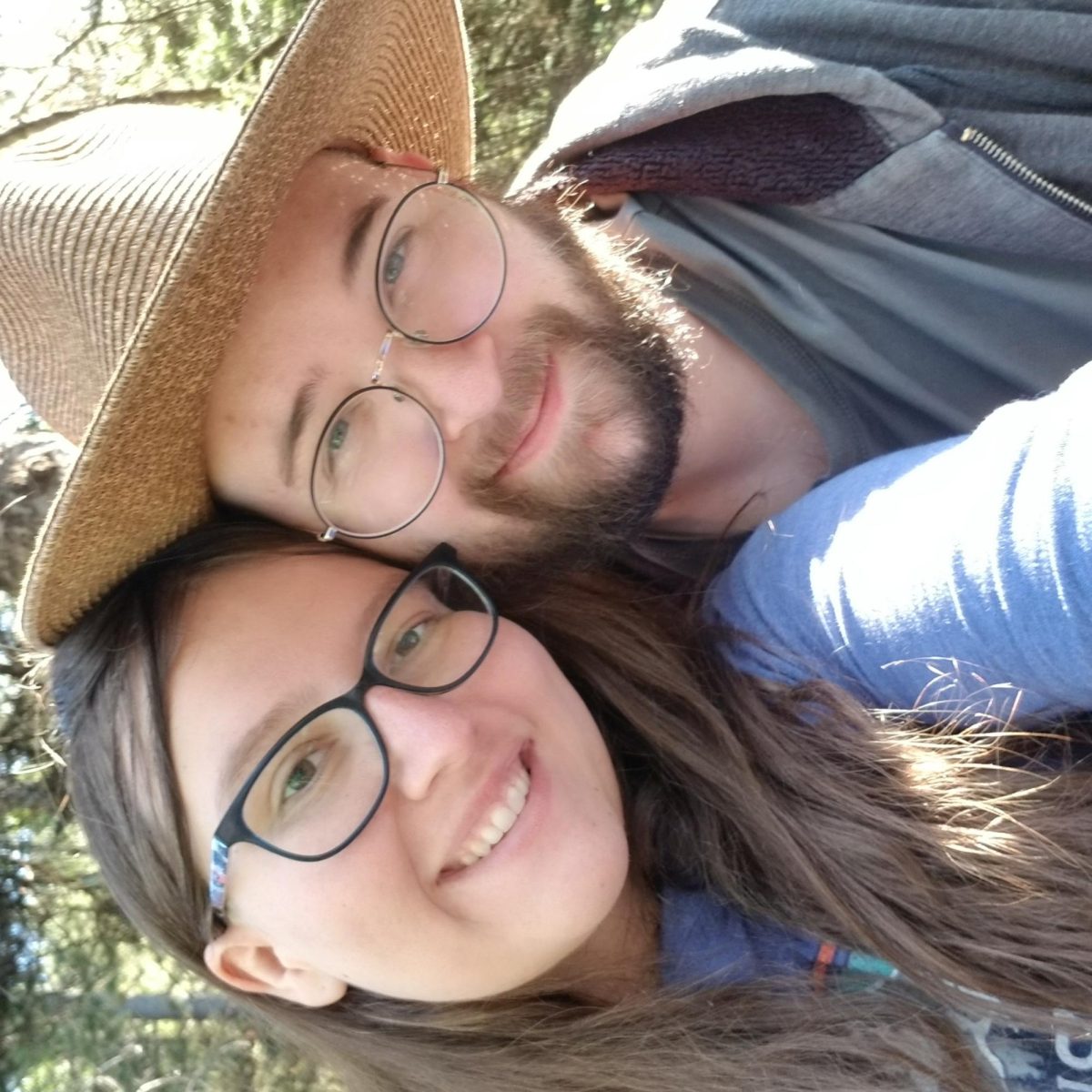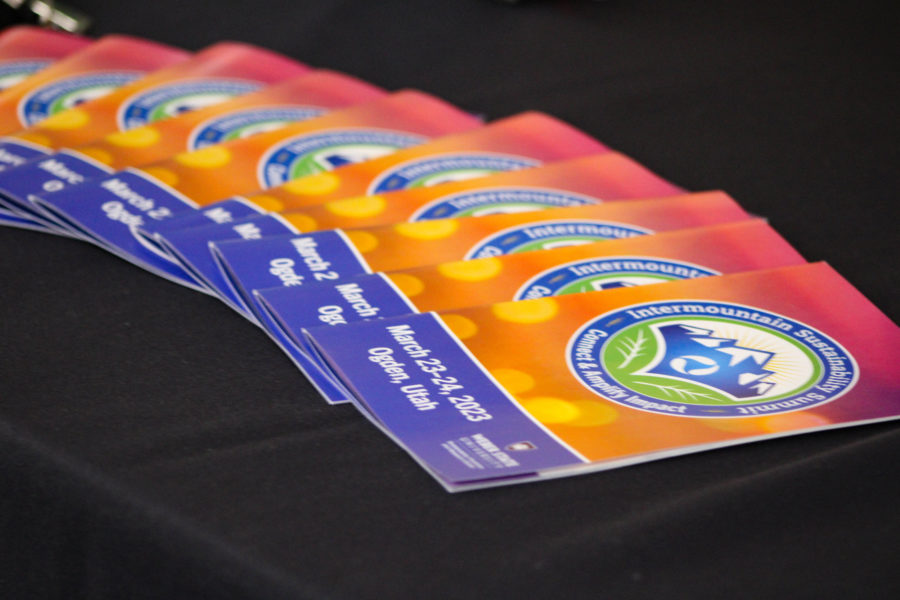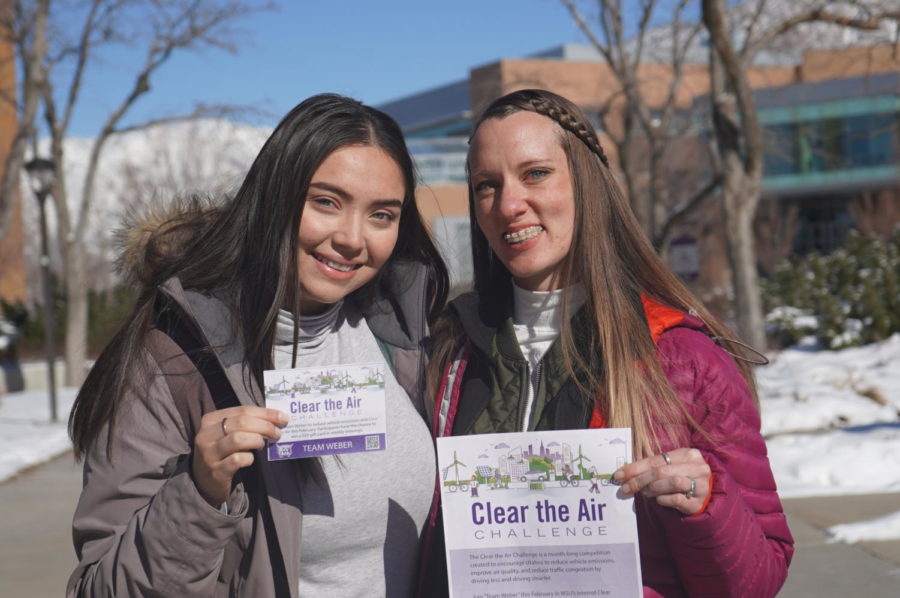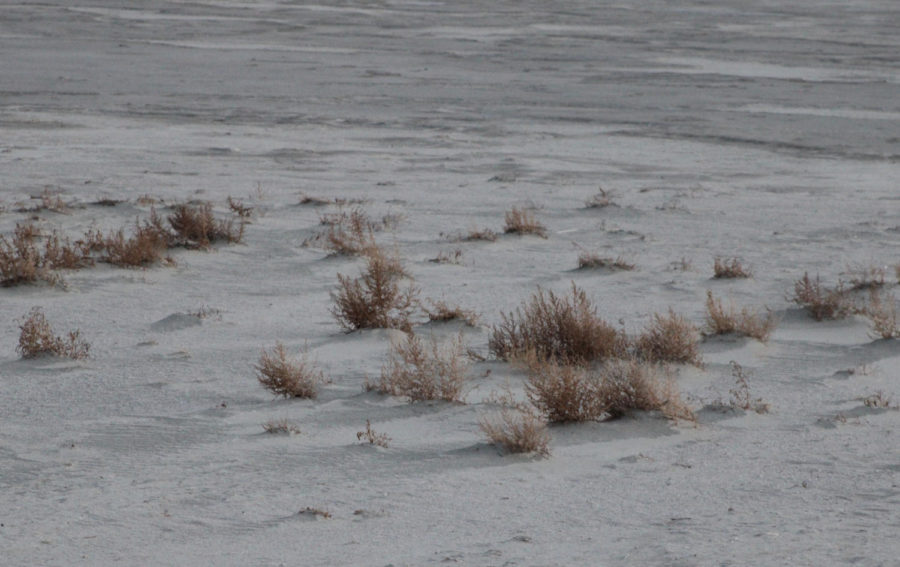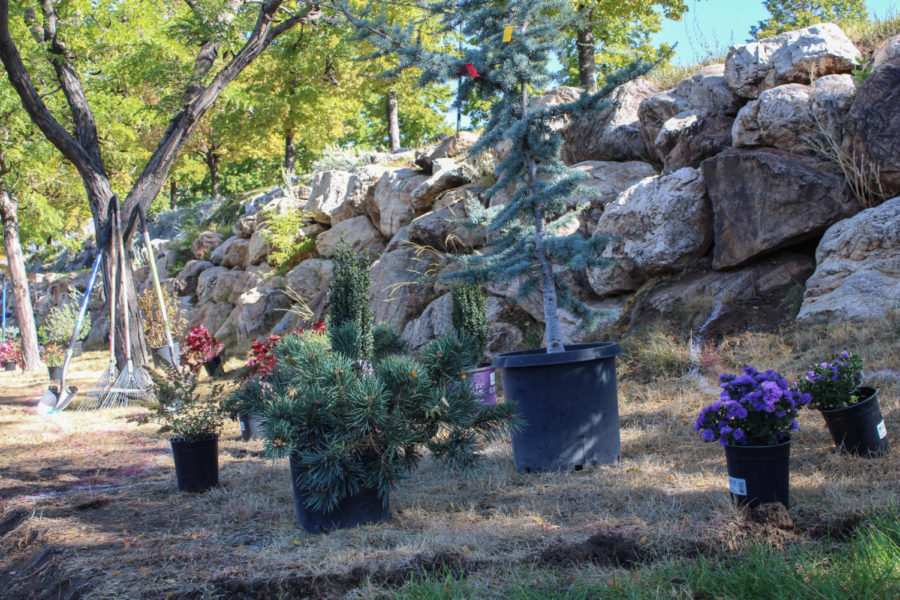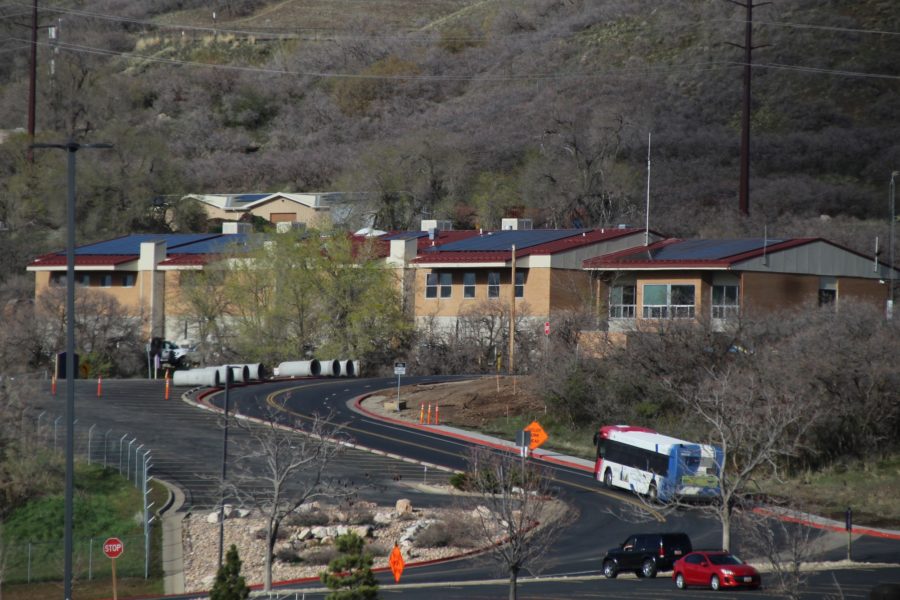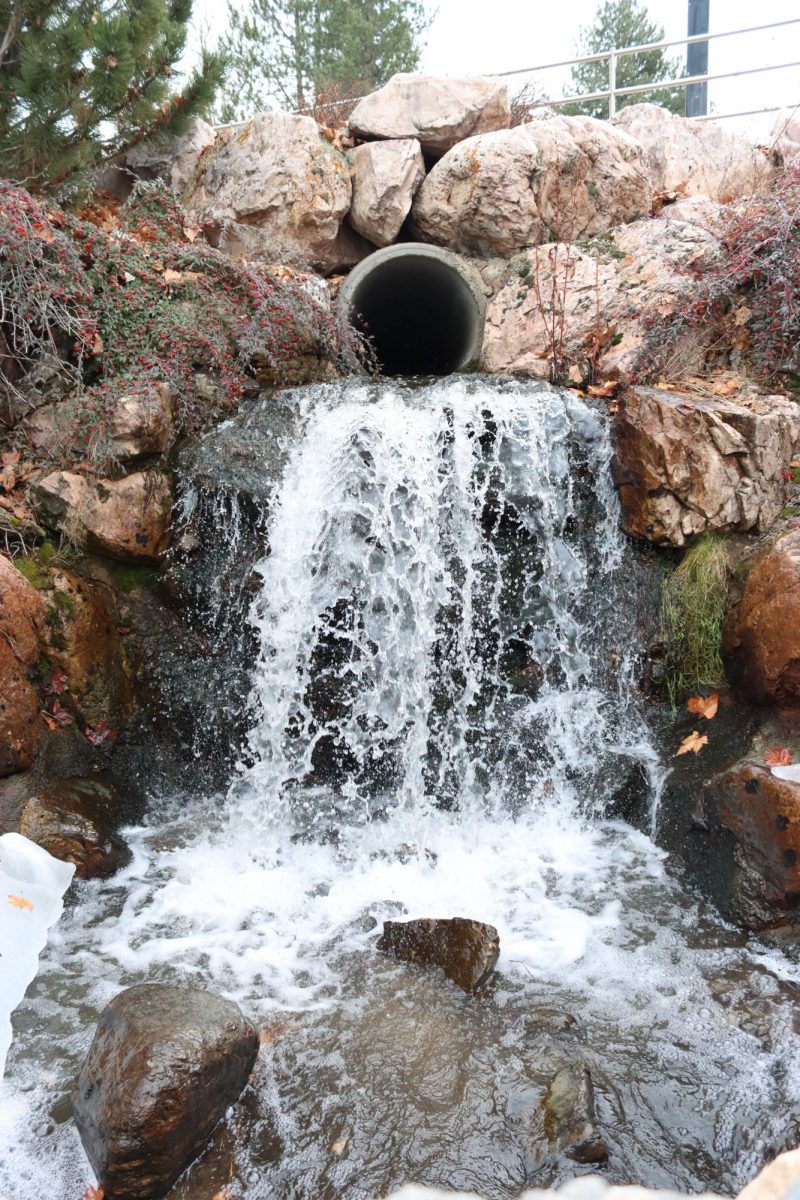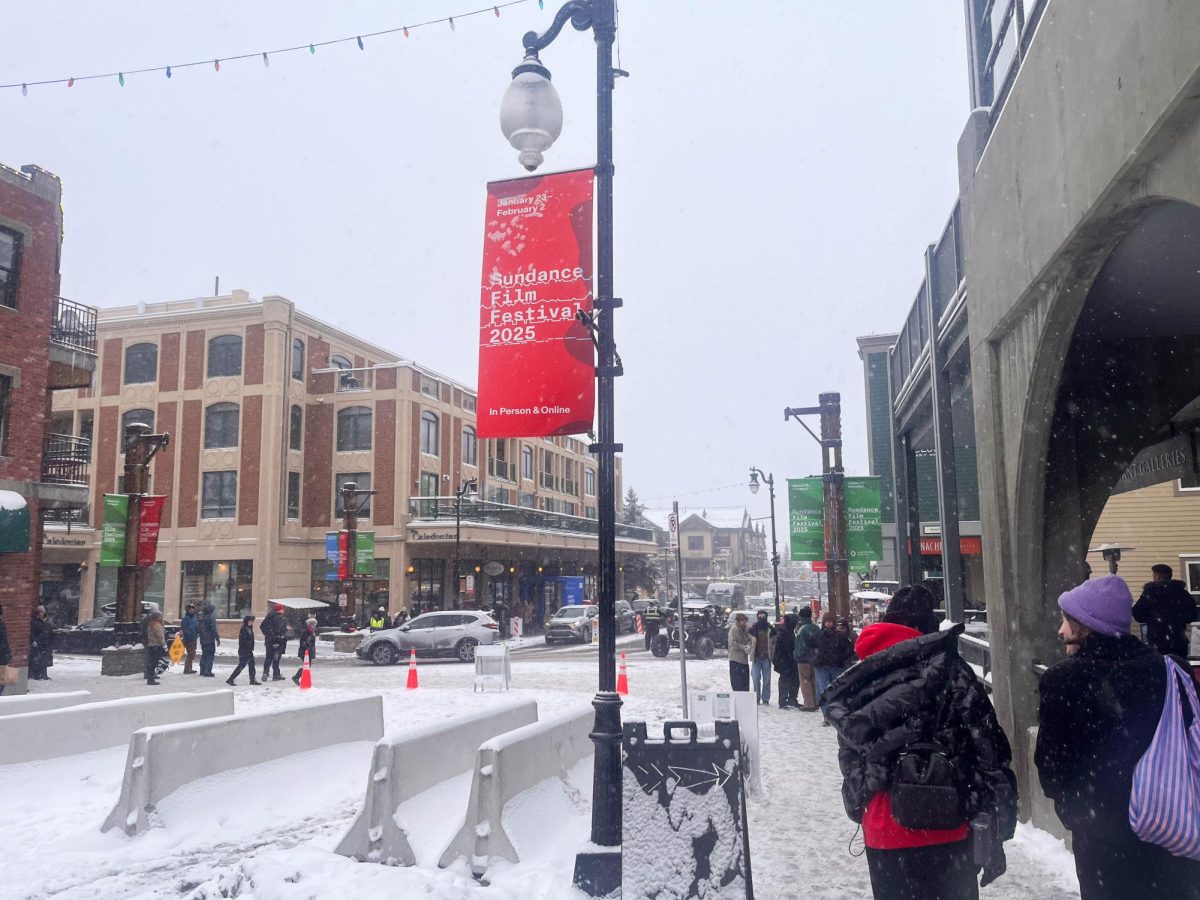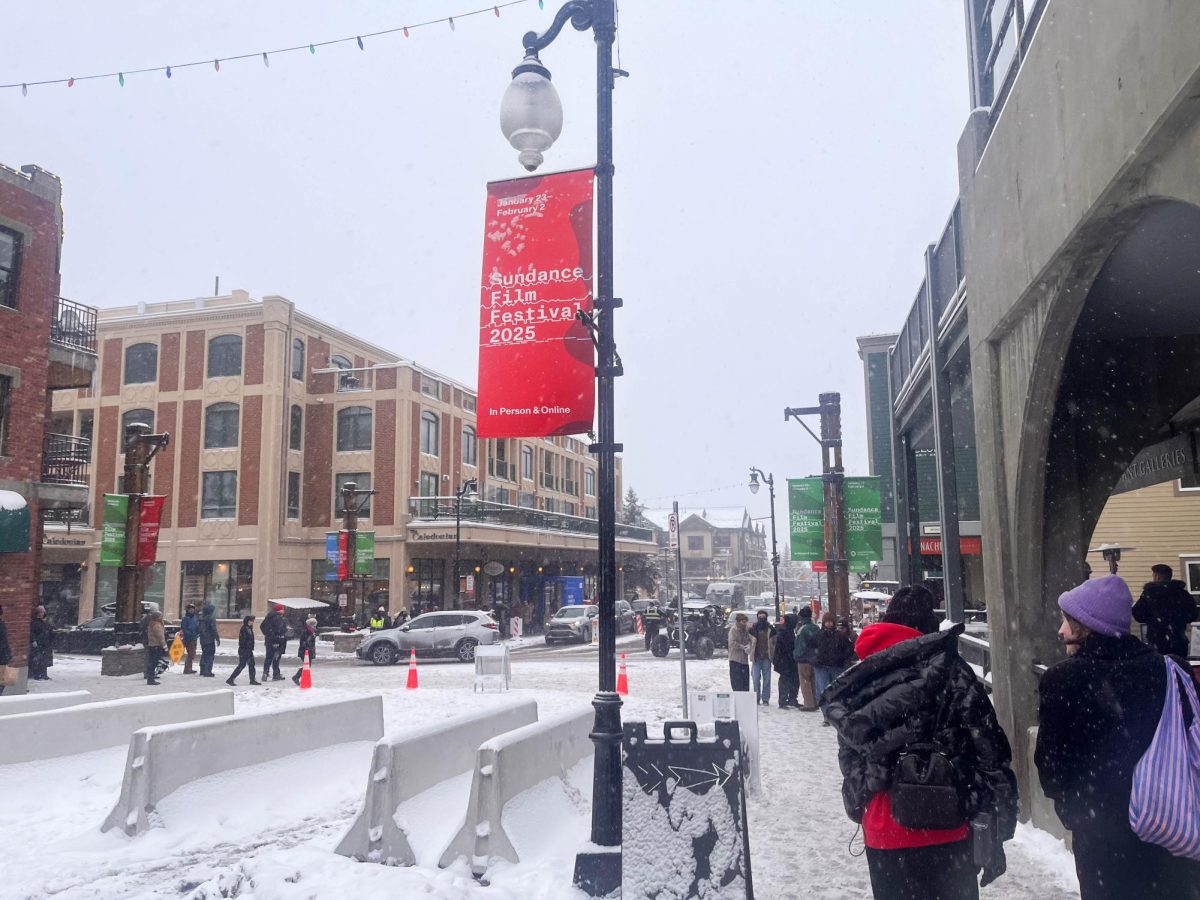Of all deaths along the Wasatch Front, 4-8 percent are attributed to air pollution. Air pollution

also takes two years off the lifespan of Wasatch Front residents. These are a couple of the facts highlighted in the Weber State University Bridge Gallery that connects the Shepherd Union Building to the Student Services Building.
Students from an advanced graphic design course offered through WSU have set up an exhibition to showcase their design and research. The designs incorporate their learned skills from their graphic design degree and combine them with the real issue of air pollution.
Students were to pick individual pollution topics that intrigued them, research them and build graphics to display the facts they found.
Cole Quartuccio, a senior in visual communications, did a poster on the effects mowing lawns can have — not only economically, but ecologically.
“We need to be more cognizant of our impact and try to contribute to alternate energy when we can,” Quartuccio said.
Quartuccio explained there are alternatives to mowing lawns with a gas-powered mower. There are electric lawnmowers that offer an emission-free alternative.
“Mowing your lawn, over time, is just as bad as taking a road trip. You just don’t think of it in that sense.”
Another alternative Quartuccio pointed out is called xeriscaping. Xeriscaping is a conceptual form of gardening that utilizes drought-tolerant plants and grasses. In addition, using more gravel or bark instead of actual grass can completely take away the need for mowing and the pollution associated with it.
“I just think, especially the Salt Lake Valley, we have a very unfortunate situation with all the refineries,” Quartuccio said. “We have some of the biggest polluters in the nation right there in that valley. I think we need to realize what situation we’re in and then do something about it.”
He suggested the possibility of the FrontRunner operating for free on days of poor air quality to encourage people to drive less. Another suggestion he had was for the refineries to shut down a couple days a week to give the Salt Lake Valley a moment to breathe without the constant pollution in the air.
According to the American Lung Association, the area from Salt Lake City to Ogden was ranked the sixth-worst in the nation in short-term particle pollution. Short-term spikes in particle pollution can last anywhere from hours to several days and can increase risks of heart attacks, strokes, emergency-room visits and early death for victims of asthma.
Quartuccio said he encourages Wildcats to educate and inform people on the air quality situation in Utah.
Utah is notorious for its problem of winter inversion, which traps smog and pollutants into a filthy haze across the Wasatch Front.
Both the Salt Lake and Davis counties have some of the highest and most toxic levels of pollution in the country when the inversion sets in.
Isaac Farley, a WSU senior who participated in the exhibit, said the project carried personal significance for him.
“My topic was about tobacco, and I chose it because my mom has been a chain smoker her entire life, and I have always thought that it was a really awful habit,” Farley said.
While thinking about the topic, Farley said, he realized that even though smokers can make their own choices, it will always impact those around them because of the secondhand smoke.
“One of the statistics I found — with as much pollution that diesel fuel adds to the atmosphere, tobacco still produces 10 times the particulate matter,” Farley said. “You wouldn’t expect that at all.”
The designs cover everything from indoor pollutions to the decline of bees throughout the United States.
“I’m all for environmental sustainability,” Quartuccio said. “I think design can play a real role in facilitating social change, and I think that’s the biggest change we need to make right now.”
Many of the graphic design students expressed their desire in their art for their fellow Utahns to take a stand against air pollution and reduce their carbon footprints.


